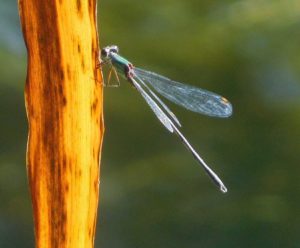
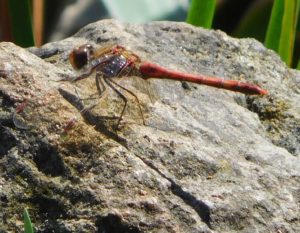
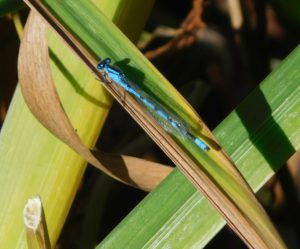
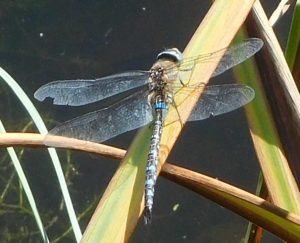

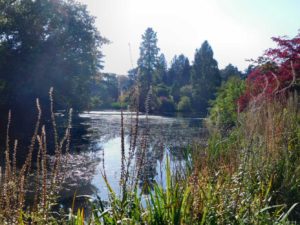
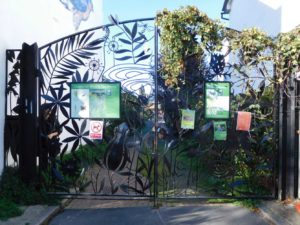
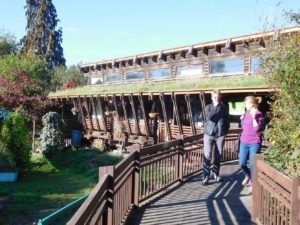

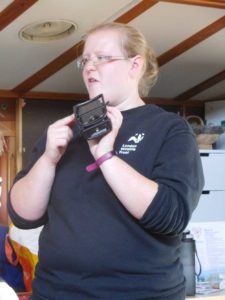
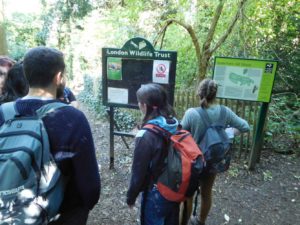
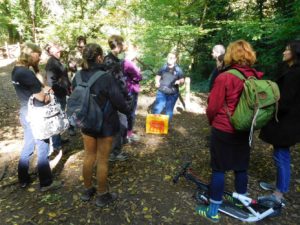
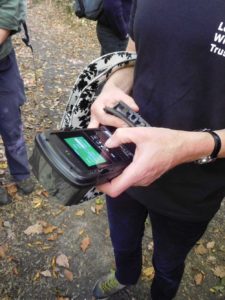
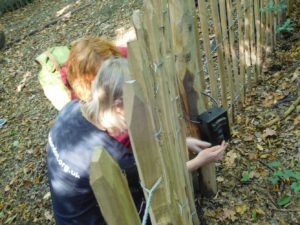
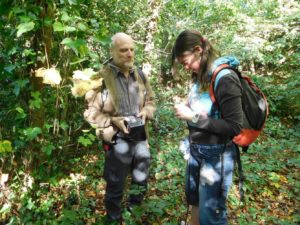
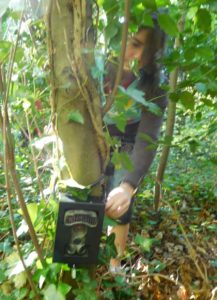
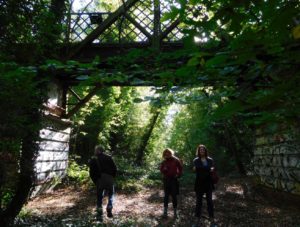
All these images are copyright. You are welcome to use them as long as you name me beside the image and provide a link to this page.
On an incredibly warm afternoon for the end of September (26° C), I went for a walk around Wraysbury Lakes, not expecting to find much: nearly all flowers should be over by now; it’s too warm for most birds to bother migrating south for the winter; insects and birds have mainly finished their showy summer breeding season; the winter ducks will not yet have arrived from the north. So I determined to relax and enjoy whatever might turn up, if anything.
There were not many ducks on the lake: mostly Tufted, a few Mallard, but 13 shy Gadwall under the far bank. A couple of Great Crested Grebes, a Heron, and a family group of cygnets made up the waterfowl, but for a party of a dozen Cormorants flying past. There were no gulls except a few Black-Headed. For the warblers, a couple of Cetti’s sang briefly; something churred once; and a few Chiffchaffs called.
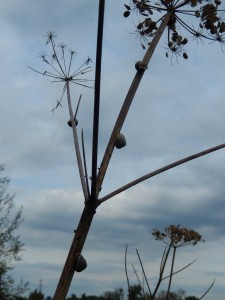
The hogweed had almost all formed its fruiting umbels and dried up, though one or two latecomers were still in full leaf. The dry stalks each had at least one banded snail parked up: some had 5 or more. So I thought I’d photograph each snail and, unusually for a nature blog, do a little rather random science and try to count the numbers in each colour variety. For the white-lipped banded land snail is rather delightfully polymorphic. I imaged 37 snails, all those I could reach, so they were probably a fair sample, unless you think there were some better-camouflaged ones I didn’t notice: I doubt that as all of them were high up on the stalks. Here are a few of them to illustrate some of the colour variation.
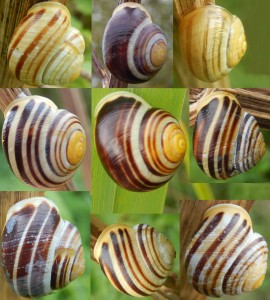
I counted:
Actually the stripes and background vary fairly continuously so a better way of dividing them up would be necessary. All the same, it’s fun to see just how convincing the polymorphism is. I didn’t see any dark-lipped snails (another species), by the way, and only a couple of snails of other species.
A small Pedunculate Oak had dozens of spangle galls under its leaves; these are caused by tiny wasps that live inside them.

A few dragonflies were still about: one Emperor; a few Hawkers, probably the Migrant Hawker; one smaller species, likely a Darter; and one Common Blue Damselfly.
The teasels, like the hogweed, had all fruited and dried out, forming a handsome pattern against the sky with their bristly pineapples on spiky stalks.
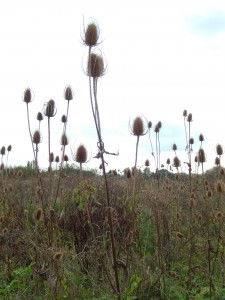
Rose hips and hawthorn haws proclaimed Autumn, season of mists and mellow fruitfulness: contradicted by the humid heat of the day.
Round on the reclaimed landfill hill, it was a pleasure to see the low five-petalled cinquefoils in the horse-nibbled grass.
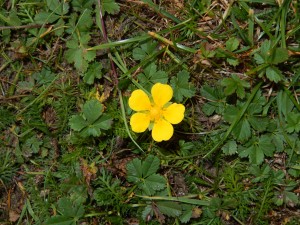
The surprise of the day came almost at the end of the walk: a party of perhaps fifty Meadow Pipits, shyly calling see-see-see as they swept up from the meadow, flashing their white outer tail feathers: the same species I had seen all over the moors of Badenoch and Strathspey, 500 miles to the north. It felt a little strange to see them passing by here.
For a day when I didn’t expect to see much, I think I did pretty well.
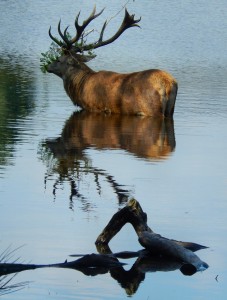
An Indian Summer is one of those special times. Yes, autumn is here; yes, flowers and leaves will soon fall; yes, season of mists and mellow fruitfulness, all of that: but for a brief moment, we know it is warm, even hot; that the time is precious, and we must seize the moment; and we drop everything to go outside with binoculars and camera to see whatever is to be seen.
And it is as wonderful as we could have hoped, warm and blithe. The Jackdaws hop about, quick to take their opportunities: some seem to live exclusively on sandwiches and crumbs. A Jay perches close by on an oak branch, abandoning the usual caution of its species. A series of high-pitched calls is not the usual posse of Ring-Necked Parakeets, but a family group of three Hobbies almost overhead, wheeling, diving, chasing each other, showing off their power and agility with long angled wings, stooping into a mock dive, fanning a tail, their black moustaches clearly visible.
Down at the Pen Ponds, pairs of Common Darter dragonflies are still in cop, laying eggs while the sun shines; around them zip Migrant Hawkers, and I glimpse one blue damselfly too. We walk around the ponds; a Heron flaps quietly across the water; a pair of Mute Swans ride high towards us, their two grey cygnets sailing between them.
And then, quite suddenly, I saw him: a stag with fine 14-point antlers, brimming with testosterone, preparing for the autumn rut. He stood quite still, up to his belly in the water. He had decorated his head with vegetation – Bracken and some Oak twigs – and was now quietly absorbing the elements, sun and water, as he listened to the occasional preliminary roar of another stag in the distance. In a few weeks he will be fighting for a harem of hinds; but today, he seemed contemplative.
A few hundred yards away, in the open grassland, a group of twenty hinds is accompanied by a couple of young males with nearly straight antlers. A big stag will surely put them to flight in an instant when the rut begins; but today, they grazed quietly with the females.
A Buzzard soared overhead, circling in the fair-weather thermals; one of the young Hobbies dashed past.
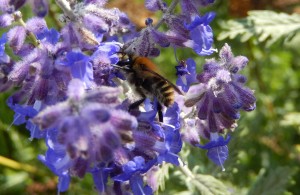
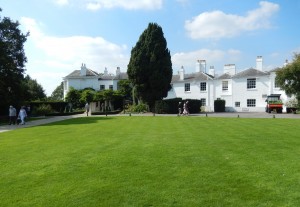
In the beautiful garden of Pembroke Lodge, they were preparing for a wedding, the lawn looking its verdant best, the bees buzzing softly in the still colourful flowerbeds full of tall daisies and delphiniums, lavender and alkanet. On the belvedere terrace, with its spacious view to the West, lovers made soft conversation at the café tables.
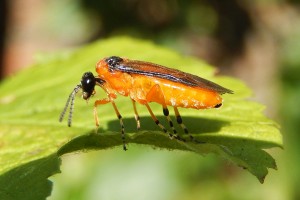
Back at home, a pair of bright saffron-coloured Gooseberry Sawflies (there are actually several species that attack gooseberries and other currants indifferently, I’m not sure what species this one is) were joyfully mating near my currant bushes, while others flew sedately about – they have a rather unusual steady flight, not like anything else. The air was warm and light; and the sawflies did not seem to have made any impact on the fruit crop. I was happy to get a photograph of one of the tiny insects, happy to see them flourishing in this Indian Summer.